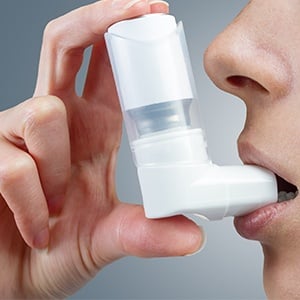
Modern medicine recognizes inhalants as complex treatments that are consumer-friendly. Yet this modern form represents the evolution of simple incense, oils, spices, and resins which, dating back to ancient Egyptian times, were used for the same purposes. Today inhalants represent a critical sector of the $374 billion pharmaceutical industry. As a researcher, you likely understand the complexities of drug synthesis, particularly a seemingly simple one like a pharmaceutical inhalant. See the below list to gain improved understanding around factors that affect inhalant drug delivery. (1)
- Drug Particle Size
Dry powder inhalers (DPIs) were developed to compensate for some of the coordination-based issues presented with metered-dose inhalers. Anywhere from 12-40% of a given dose will be absorbed into the lungs, with doses containing finer particles having a higher success rate. Not only do finer particles have an easier time being absorbed across lung tissue lining, but they also are less likely to form agglomerates with large carrier particles. That said, every inhalant dose has a distinct drug aerosol, and particle size will vary to appropriately suit the dose. (2)
- Spray Velocity
Although instinct might point to higher aerosol velocity as contributing to higher rates of lung absorption, the opposite is actually true. High velocities combined with large particle sizes cause the aerosol to heavily impact the oropharyngeal region as opposed to the intended destination. By reducing its velocity, an aerosol is better able to bypass the oropharyngeal area to get to the upper airway.
- Inspiratory Flow Rate
Abbreviated IFR, inspiratory flow rate measures the amount of gas delivered to the lungs during inspiration. To achieve maximum dosage of an aerosol drug, IFR should be larger rather than smaller. The specific recommendation will likely depend on the individual’s demographics and current health status.
- Patient Administration
Researchers unfortunately have little control over how a patient administers an aerosol drug. For example, if the aerosol is intended for the nose but the patient inspires only through the mouth while administering the drug, delivery will be minimal. Although most drug companies already provide explicit administration directions with the pharmaceutical, further education may be needed for patients prescribed inhalants.
Whether you are new to aerosol research and production or are working to optimize an existing aerosol, it should be produced with high quality equipment to achieve a consistent and effective product. Homogenization is a key component of the synthesis process, specifically in its ability to reduce the particle size of ingredients; thus, it is in every laboratory’s interest to invest in a high quality homogenizer.
Pion is trusted by laboratory managers and researchers around the world. Pion's BEE brand laboratory homogenizers can make products such as emulsions, dispersions, lipids, and suspensions, which are used for synthesis of a variety of pharmaceutical products. In addition, we have extensive experience assisting our product users as they transition through the drug development process.
Learn about how Pion's BEE brand homogenizers can help improve your aerosol drug here!

